Although the European pet food market is developing unevenly, a trend towards dry food is clearly recognisable
Advantages of dry food
This trend is by no means only limited to the German market, but is spreading across the whole of Europe. There are many reasons for this development. The most important reason is that many consumers have recognised that in comparison to tinned food, dry food is not only convenient and extremely hygienic but also attractively priced. Any longstanding prejudices that eating dry food over a long period would be detrimental to an animal’s health have also been eliminated. There is no lack of support for the cause of manufacturers of dry food. For many years vets have vigorously supported trendy brands like Hill’s, Royal Canin and “Eukanuba” and thus contributed largely to the positive image the dry food market has today.
The general trend towards feeding dry food, which crossed the Atlantic from the USA in the 1990s, has now embraced the whole of Europe. Southern European countries such as Spain and France, where pets have always been fed mainly on dry foods, have been more receptive to the new development than the UK, for example, where dry food is also a growing market but wet and mixed products are still very popular.
Dry food is still on the increase in Europe. This is a great advantage for the premium sector, one of the high-growth markets in the industry.
The growth of the dry food sector is closely linked to the upturn in premium brands. Companies like Iams Pet Food, Royal Canin and Hill’s have been very successful in getting the message across to pet owners that the health and life expectancy of dogs and cats is largely influenced by the type of nutrition they receive. Especially in countries where pets have attained the status of family members, there is an increased awareness of nutritional issues. Specialist terms such as omega-6 fatty acids or fructo-oligosaccharide, hitherto only used by animal nutrition experts, are finding their way into the everyday language of the average pet owner. The composition of the food, largely ignored up to now by most purchasers of pet foods, is increasingly becoming the decisive criterion in choosing a pet food. A fair number of pet owners find it quite natural to feed their dog or cat with food that is adapted to their different needs in the individual stages of their life. The time has finally come for all the life cycle food product ranges that fill the shelves in the pet food departments of the retailers.
Pets become family members
It seems that there is now no stopping the application of any advances in nutritional research traditionally reserved for the human health sector to pets. In view of the increasing number of dogs suffering from allergies, sensitive products have turned into money spinners. Organic animal food made with raw materials from controlled agricultural sources/farming methods has won the hearts of consumers as much as vegetarian dog food. And the number of “healthy” dog snacks that have come onto the market in recent years could fill the entire shelf space of speciality retailers.
Royal Canin became a pioneer in the pet food industry with its new breed-oriented concept for food.
We want healthy things that are good for us – that is the motto. But as in the human sector, the trend in the animal food sector is moving increasingly towards convenience food. And single serve products, the new hopefuls in the wet food sector, certainly benefit from these developments. They should also achieve high growth rates in future years. There are no limits to the diversity of snacks, either. “Pigs ears light with natural peppermint” were on offer at Interzoo; another exhibitor presented an organic sausage at the fair which was made from 90 per cent pure offal, rice and vegetables.
Such delicious snacks of course need special packaging. There are continuous developments in this field, too. Choose between gusset pouches, fresh-seal packs and clip & grip closures. These are just a few of the most innovative developments which make it even easier and more convenient for purchasers to feed their four-legged friends.
Limits set for growth
It remains to be seen just how much the market can still absorb of the many innovations which are introduced every year at trade fairs around the world. Even now many speciality stores are increasing diversity at the expense of clarity. This in turn makes it increasingly difficult for customers working their way along the supermarket aisles to know which of the many colourful packages they should choose. And this is all the more so because in many outlets the presentation of products at the point of sale is anything but helpful or sales-promoting.
Snacks are still popular and the variety of treats is on the increase.
Take the example of promotions: because promotions are assuming growing importance in the speciality retail sector, they are offered ever more frequently, too. But because there is usually not enough sales floor area for elaborate new displays, large-scale promotions often create a tight squeeze in a retail outlet. This obviously not only limits a clear layout and display but also dilutes the impact of the promotion.
And the example of new food brands: instead of deciding on a specific number of brands, the owners of specialist pet shops let themselves be persuaded to take on more and more new product lines. It is of little advantage to pet shop owners if they stock a further two brands in addition to their existing eight premium lines, just because two customers might have asked for a particular brand. Less is sometimes more, as the old saying goes. This is often true of pet shops too.
Petfood sales in Europe 2002 (in Mio. €)(download pdf-file)
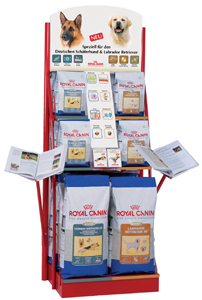
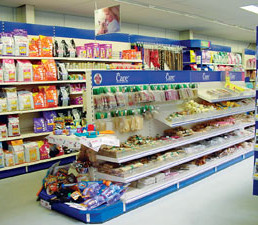

 Menü
Menü





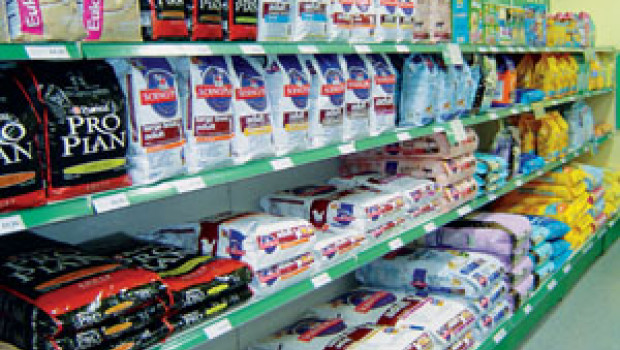
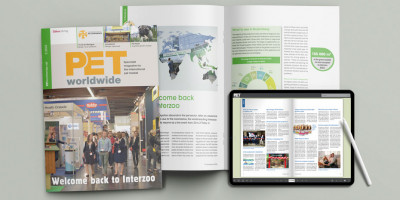

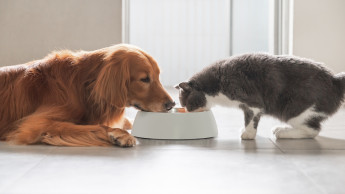



 Print - digital - online
Print - digital - online





